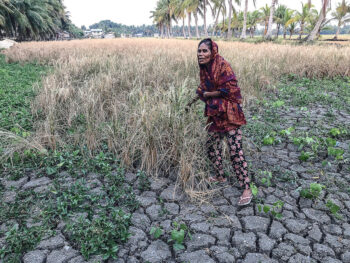DAVAO CITY (MindaNews / 4 Dec) – The siege of Marawi City staged by Islamic State-inspired militants led by the Maute brothers and Abu Sayyaf leader Isnilon Hapilon may already be over, but more stories of anguish and hardships suffered by civilians are just beginning to unfold.
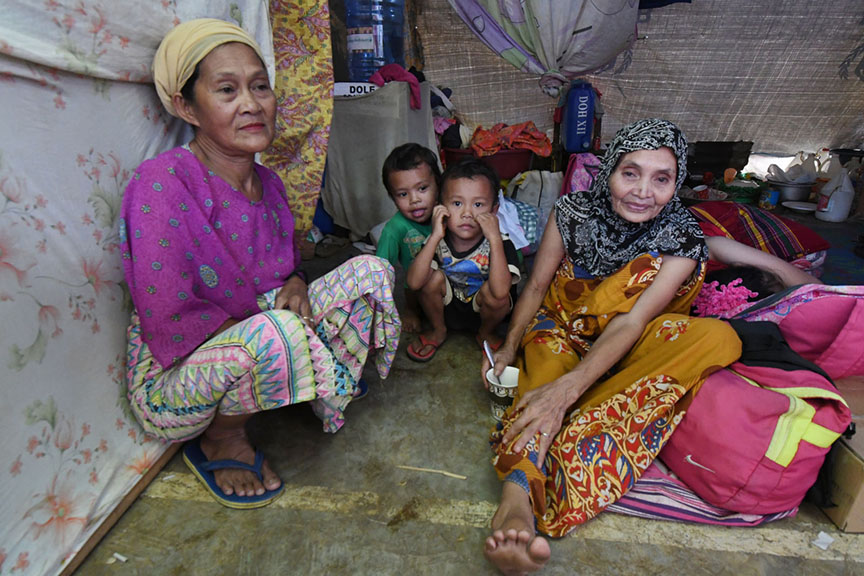 Elderly and children endure the congestion at an evacuation camp in Saguiaran, Lanao del Sur at the height of the Marawi siege. MindaNews file photo by FROILAN GALLARDO
Elderly and children endure the congestion at an evacuation camp in Saguiaran, Lanao del Sur at the height of the Marawi siege. MindaNews file photo by FROILAN GALLARDO
Khuzaimah Maranda, Project Coordinator of Tapukan Farmers Movement for Progress and Concord Inc., and ta volunteer of Teach Peace Build Peace Movement Lanao Area, last Saturday shared with journalists attending a forum on “Reporting Marawi, Reporting ‘Violent Extremism'” snapshots of the plight of Maranao children whose families spent the first few days of the conflict in their home city.
One of them, a young boy who sold peanuts in Padian in Marawi City, walked towards the highway and reached Marantao town but while there, had to flee because the armed men attacked Marantao, forcing him to move to Bacolod-Kalawi town.
She said another girl from Ground Zero who sought refuge in Balo-i town in Lanao del Norte has been separated from her father for months because as a result of the siege “the father could no longer recognize his children.”
One child saw a militant behead a Christian in Barangay Padian, Maranda said.
Aged between 7 and 13 years old, those children “didn’t expect that war could be this brutal,” she said.
“Another child would faint whenever she heard the song ‘Bangon Marawi’,” she said, adding that she and her colleagues witnessed it themselves.
Maranda added that there had been no equitable distribution of relief assistance to the “vulnerable” evacuees, in particular the children, elderly and those with disabilities.
She cited the case of a blind elderly woman from Barangay Raya Madaya who needed diapers but had remained unattended to. The woman is now staying in Piagapo town.
In one instance, a nun had to lend money so that a cadaver from a hospital could be buried, Maranda said.
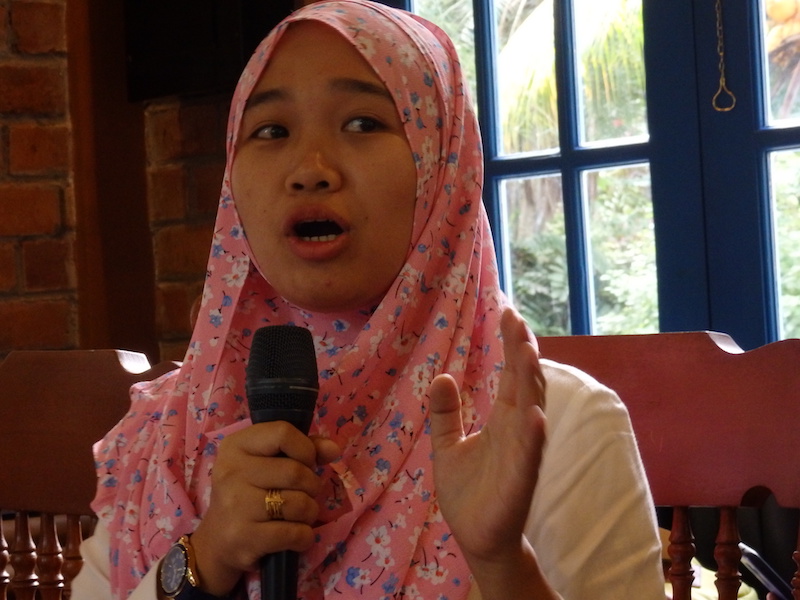 Khuzaimah Maranda, team leader of Teach Peace Build Peace Movement Lanao Area shares with journalists attending the forum on “Reporting Marawi, Reporting ‘Violent Extremism” the plight of the vulnerable sectors in Marawi City. MindaNews photo by Carolyn O. Arguillas
Khuzaimah Maranda, team leader of Teach Peace Build Peace Movement Lanao Area shares with journalists attending the forum on “Reporting Marawi, Reporting ‘Violent Extremism” the plight of the vulnerable sectors in Marawi City. MindaNews photo by Carolyn O. Arguillas
“If this continues, another group will present to us a narrative that will put the government in a bad light,” she said.
“Of course, they will pledge allegiance to those who can give them food. The vulnerable will always be vulnerable, other groups will exploit their emotions and the inaction of government,” Maranda said.
“I would just cry. I don’t know how they will survive if not for the kindhearted people. With the millions of help coming in, how are the IDPs (internally displaced persons) faring?” she added.
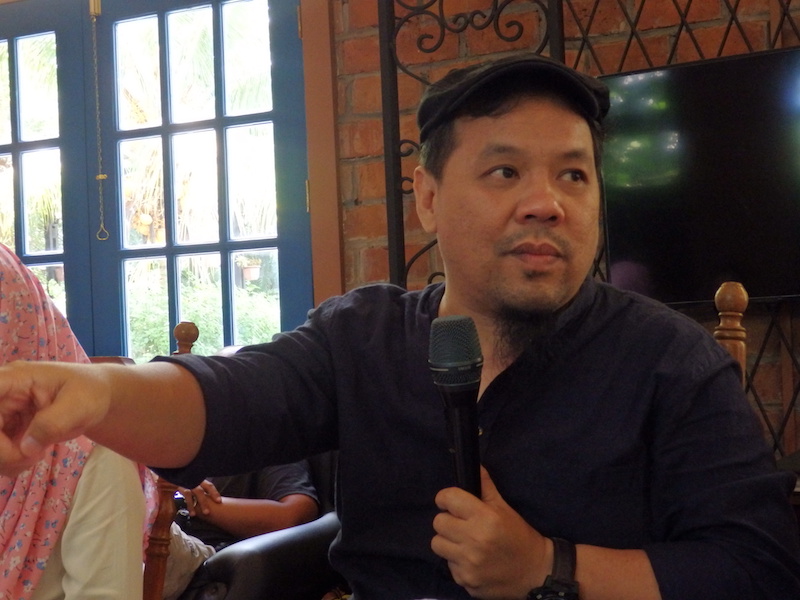 Drieza A. Lininding, chair of the Moro Consensus Group. Lininding is also Secretary-General of the Bangsamoro National Movement for Peace and Development (BNMPD) and co-founder of the militant youth organization, Free The Bangsamoro Movement. MIndaNews photo by Carolyn O. Arguillas
Drieza A. Lininding, chair of the Moro Consensus Group. Lininding is also Secretary-General of the Bangsamoro National Movement for Peace and Development (BNMPD) and co-founder of the militant youth organization, Free The Bangsamoro Movement. MIndaNews photo by Carolyn O. Arguillas
Drieza Lininding, of the Moro Consensus Group, said humanitarian groups, with the exception of the Philippine Red Cross, were slow in responding to the evacuation.
He attributed this to what he perceived to be lack of public sympathy due allegedly to President Rodrigo Duterte’s statements blaming the Maranaos for the attack on Marawi.
Leah Tarhata Mehila, focal person relief operations of the Ranao Rescue Team, said it did not help that the mayors were denying evacuees in their towns.
“After two weeks the evacuation centers still had no camp managers with the Department of Social Welfare and Development telling us to wait for the International Organization for Migration because ‘they are in charge’ of this,” she said.
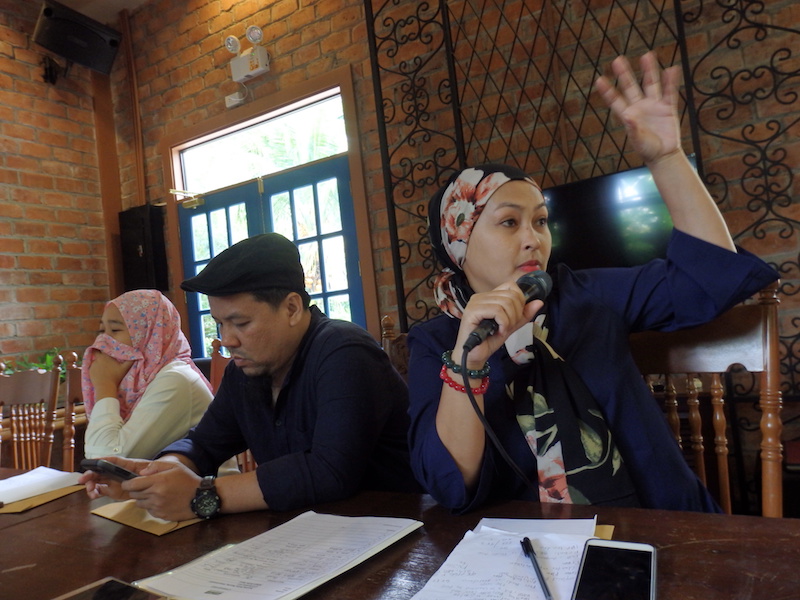 (L to R) — Khuzaimah Maranda, Drieza Lininding and Leah Tarhata Mehila, civil society representatives from Marawi City update journalists attending a forum on “Reporting Marawi, Reporting ‘Violent Extremism’ on the humanitarian response, vulnerable sectors and human rights situation in Marawi City on Saturday, 2 Decmber 2017 at the Malagos Garden Resort in Davao City. MIndaNews photo by Carolyn O. Arguillas
(L to R) — Khuzaimah Maranda, Drieza Lininding and Leah Tarhata Mehila, civil society representatives from Marawi City update journalists attending a forum on “Reporting Marawi, Reporting ‘Violent Extremism’ on the humanitarian response, vulnerable sectors and human rights situation in Marawi City on Saturday, 2 Decmber 2017 at the Malagos Garden Resort in Davao City. MIndaNews photo by Carolyn O. Arguillas
Mehila added that the DSWD required the municipal social welfare and development officers to certify the list of evacuees before they would release relief assistance.
“That’s a problem because the local government units were not functioning,” a long-time humanitarian worker in Mindanao whose identity cannot be revealed, said, referring to the municipal governments of Lanao del Sur.
Residents of towns adjacent to Marawi evacuated too for fear that the fighting might spread to their areas. This explains why the number of evacuees reached some 400,000 individuals even if Marawi only had a population of over 200,000.
“Distribution of relief goods by the DSWD was in chaos, there were no schedules. If there’s a distribution in one barangay, those from other barangays would come,” Mehila said.
She further recalled that the price of rice in Lanao del Sur rose to as much as 5,000 pesos from an average of 2,000 pesos per sack. “Even if the evacuees had money, it’s still difficult because supply was scarce.” (H. Marcos C. Mordeno / MindaNews)
